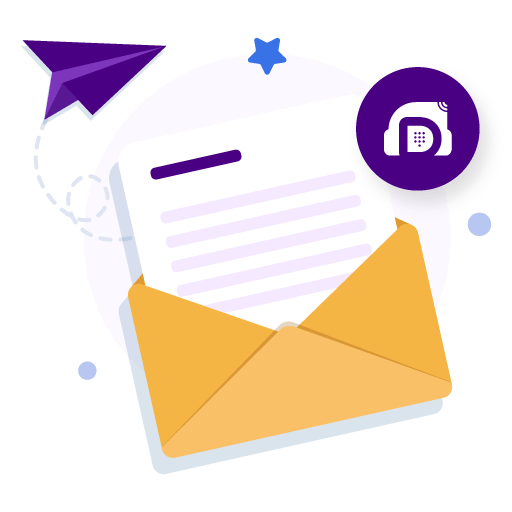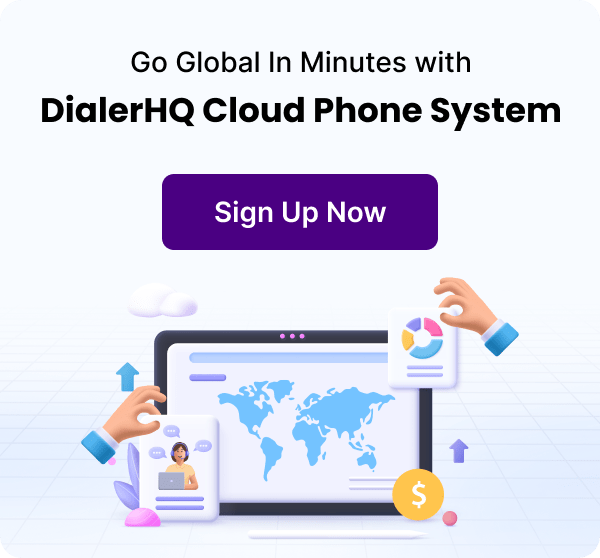Senior Writer: Sindhu Bharathi
Good customer service holds paramount importance in increasing customer loyalty in today’s competitive business era. Reports suggest that it takes 12 positive customer experiences to make up for one negative experience. Therefore, call centers use advanced technologies to study the interactions between customers and call center agents. Among these, speech analytics for call centers is revolutionizing call center analytics with its cutting-edge technology.
This blog explores the meaning of speech analytics, its benefits and features, and how it can help gain businesses valuable insights to improve quality assurance and customer experience. So, let’s begin.
What is Call Center Speech Analytics?
Call center speech analytics is a technology that offers in-depth insights into your customer calls by analyzing audio conversations. It extracts, understands, and analyzes the daily language, including words, phrases, and emotions, that your customers and call center agents use to uncover the actionable insights essential for improving customer experience.

The technology uses natural language processing (NLP), machine learning, and AI to analyze a large amount of unstructured data. It runs complex algorithms that collect real-time data and compare it with historical data collected from customer interactions, providing patterns, trends, and pain points of customer queries. By understanding these speech analytics insights, call centers can identify frequently occurring issues, design standard operating procedures, and find ways to solve customer queries quickly.
Leverage the benefits of speech analytics in your call center to continuously improve efficiency, identify pain points, and drive customer satisfaction. With DialerHQ, you can understand the customers' pain points and act accordingly to provide a better customer experience.
Why Call Centers Must Use Speech Analytics?
Customers today seek immediate resolutions. Therefore, good customer service becomes crucial for driving business growth. Speech analytics serves as a great medium in elevating customer experience levels, as it provides you with a comprehensive understanding of your customer-agent interactions. All modern contact centers use speech analytics to gain deeper insights about:
- Customer emotions
- Agent performance
- Training requirements
- Customer intent
- Customer preferences
- Customer history
- Product/service feedback
- Recurring queries
- Frequently asked questions
Furthermore, call center speech analytics software can help call center managers ensure regulatory adherence and mitigate risks associated with legal repercussions.
Benefits of Speech Analytics for Call Center
Speech Analytics leverages advanced technology to improve customer service in various ways. Let’s take a closer look at some of the top benefits of using speech analytics for your call center:

1. Better Quality Assurance
Speech analytics technology empowers call centers to maintain and improve their standards of customer service. It provides real-time call monitoring and post-call analysis to track agent performance and helps monitor the strengths and weaknesses of the contact center agents. Thereby, voice analytics for call centers helps you identify the areas of improvement of your agents and what training they would require for better performance.
You May Also Read : Call Center Quality Assurance (QA): A Comprehensive Guide
2. Personalized Services
Studies show that 71% of customers expect personalized experiences from businesses, and 76% feel frustrated when this expectation is unmet. Using speech analytics tools, you can understand what exactly your customers are looking for. This helps you offer personalized services and experiences according to their specific requirements. Customer service with a personalized approach fosters customer satisfaction and improves customer loyalty, and hence, improves your brand image.
3. Increased Operational Efficiency
Speech analytics automates the analysis of large data of customer conversations to identify trends and patterns of customer-agent conversations. This saves a lot of human effort and time that can be used in strategic planning. Contact centers can also use speech analytics data to streamline their operations and workflows. Improved contact center operations enable call centers to handle higher call volumes and reduce customer wait times, contributing to more efficient call center management.
4. Reduced Customer Effort

Speech analytics play an important role in reducing customer efforts by providing actionable insights. It identifies recurring customer issues by identifying specific keywords and phrases like “I am unable to..” or “This process is very complicated..” and so on, and helps identify the areas of improvement. For example, if multiple customers find it difficult to reset thier passwords, you can simplify the process and provide faster instructions without having to look into the matter.
5. Reduced Churn Rates
Call centers constantly aim to offer better customer service to increase customer retention rates. Speech analytics tools can help you reduce churn rates by pinpointing what exactly is leading your customers to stop doing business with you. It identifies the root causes of customer dissatisfaction by analyzing calls that may express frustration. Let’s say you are losing the majority of customers due to long call hold times; you can implement measures like improved call routing and streamlined call flows.
6. Identifies Upsell Opportunities

Speech analytics is a great tool for identifying upselling opportunities as customer care agents directly get insights about the interests of the customer. They can assess customer needs, preferences, and buying patterns while on call and hit the opportunity to recommend relevant products or services at the right time. Contact centers can also recognize missed upsell opportunities in the post-call analysis, helping agents to be more vigilant in their future interactions.
7. Drives Call Center Growth
By effectively leveraging contact center speech analytics, you proactively address and resolve call center bottlenecks and equip agents with the skills and knowledge they require to provide excellent customer service. Hence, the technology not only improves customer experience but also leads to overall improvement of operational efficiency, driving call center and business growth.
How to Use Speech Analytics in Call Center?
Utilizing speech analytics for your call center can unlock valuable insights to boost customer satisfaction. Here is a roadmap for getting started with speech analytics for call centers:

1. Define Your Objectives
Setting clear goals will help you achieve desired results using speech analytics. Before you start using speech analytics software for your call center, note down measurable goals for your key areas of improvement. Ask yourself what specific challenges you are facing in the contact center. For example, if you want to improve agent performance or reduce customer effort, involve objectives to improve your first-call resolution rates and customer satisfaction scores.
2. Choose the Right Software
Find advanced speech analytics software that is compatible with your existing call center systems. Research different speech analytics tools for their features and functionalities and consider capabilities like accuracy, speech recognition, sentiment analysis, analytics, and dashboards. You can also take trials to test various software solutions and check if they meet your requirements and budget.
3. Identify Key Metrics

The next step is to define the key metrics that you want to measure using speech analytics tools. These metrics should align with the goals and objectives of your call center. By identifying the key performance of your call center, you will be able to effectively track and monitor data using speech analytics. These metrics may include first-call resolution rates, agent performance, call handling times, customer satisfaction rates, customer churn rates, etc.
4. Train Your Agents
Plan a training program for your contact center agents and team leaders to equip them with the knowledge required for understanding and utilizing speech analytics effectively. Explain to them how they can leverage the insights of speech analytics in their daily work to drive better outcomes. Address any potential doubts or concerns about the process or technology. Ensure you start slowly instead of putting to use everything at once.
5. Extract Valuable Insights
After the successful installation of speech analytics software in your call center, monitor and analyze the captured data regularly. Review the insights of the speech analytics data every day and make necessary changes as required to achieve the desired outcomes. Leverage these insights to revise your scripts, train your agents, modify your SOPs, and improve your services.
Features of an Efficient Speech Analytics Tool
An efficient speech analytics tool is all you need to boost customer service in your business. Look for the following speech analytics features when selecting speech analytics software for a call center:

1. User-friendly Interface
The speech analytics software should be intuitive and easy to learn and use. It ensures a smooth user experience for your call center agents, enabling them to utilize the benefits of speech analytics effectively with minimal training.
2. Accurate Transcription
The speech analytics should be able to transcribe languages, accents, pitch, sentiments, and speaking styles accurately. It should be able to capture the subtle nuances in the conversations so that it can provide highly relevant data for analysis.
3. Customizable Dashboards
An efficient call center speech analytics software should offer customizable dashboards and reporting to allow users to comprehend the captured data quickly. It should be able to present key analytics as per the user’s requirements and tailor insights to different contact center managers.
4. Integration with Other Tools
The speech analytics for your contact center should be able to integrate seamlessly with your existing software systems like CRM and PBX. This ensures that all your data is integrated in one place, and you can use real-time speech analytics without manual data entry.
5. Advanced Functionality
Look for voice analytics tools that offer advanced features like deeper extraction from recordings, topic modeling, compliance monitoring, guidelines violation identification, and more as per the needs of your call center.
Final Thoughts
Delivering exceptional customer service in the business is the cornerstone of building long-lasting customer relationships. However, managing high volumes of customer calls can be daunting for call centers. By harnessing the potential of speech analytics, contact centers can utilize the power of data and technology and foster a customer-centric approach. It can help gain insights into customer sentiment, personalize customer interactions, and improve customer satisfaction.
Frequently Asked Questions
Speech analytics software can capture a variety of data from audio recordings. This data may include specific keywords and phrases, identification of products/services relevant to customer inquiry, main topics of customer conversations, emotional tone of customers, speech rate, conversation patterns, the pitch of the agents and customers, engagement levels, and more.
Modern speech analytics software can provide accurate and reliable data. Nevertheless, they do come with certain limitations to thier speech analytics capabilities, like misinterpretation of the speech and poor understanding of the context.
Speech analytics use advanced technologies for natural language processing, multilingual speech recognition, dialect adaptation, and speaker diarization to distinguish between various languages, dialects, and tones.
Sindhu Bharathi is an inquisitive learner and prolific B2B/SaaS writer with experience of working in diverse industries. She has a demonstrated history of delivering well-researched, original content. From generating long-form articles, blogs, and white papers to social media copies, she pivots her skills to resonate with the medium and deliver compelling content that has the power to captivate the audience.
Updated : May 3, 2024

Subscribe to our newsletter & never miss our latest news and promotions.





